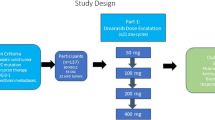Abstract
Because multidrug resistance (MDR) is a serious impediment to the use of chemotherapy in treating cancer patients, great efforts have been made to search for effective MDR-reversing agents. We have developed a brand new synthetic ardeemin derivative, 5-N-formylardeemin, and investigated the activity of which in reversing MDR in MDR cancer cell lines derived from human breast cancer (MCF-7-R) or lung cancer (A549-R). 5-N-formylardeemin strongly enhanced the anti-cancer efficacy of doxorubicin, vincristine through potentiation of apoptosis in both MCF-7-R and A549-R at relatively noncytotoxic concentrations in vitro. Mechanistic studies showed that 5-N-formylardeemin inhibited the expression of MDR-1 (P-gp) and increased the intracellular accumulation of cytotoxic drugs in the MDR cells, suggesting that 5-N-formylardeemin reverses MDR activities through inhibiting MDR-1 expression. Interestingly, 5-N-formylardeemin also sensitized the parent wild-type cancer cells toward these chemotherapeutic agents to various extents. Importantly, in vivo studies demonstrated that 5-N-formylardeemin significantly improved the therapeutic effects of doxorubicin in nude mice bearing A549-R xenografts, which was associated with reduced expression of MDR-1 protein level and increased apoptosis in tumor tissues. These results underscore 5-N-formylardeemin as a potential sensitizer for chemotherapy against multidrug resistant cancers.






Similar content being viewed by others
References
Chen KG, Sikic BI (2012) Molecular pathways: regulation and therapeutic implications of multidrug resistance. Clin Cancer Res 18:1863–1869
Lemos C, Jansen G, Peters GJ (2008) Drug transporters: recent advances concerning BCRP and tyrosine kinase inhibitors. Br J Cancer 98:857–862
Burger H, Foekens JA, Look MP et al (2003) RNA expression of breast cancer resistance protein, lung resistance-related protein, multidrug resistance-associated proteins 1 and 2, and multidrug resistance gene 1 in breast cancer: correlation with chemotherapeutic response. Clin Cancer Res 9:827–836
Higgins CF, Gottesman MM (1992) Is the multidrug transporter a flippase? Trends Biochem Sci 17:18–21
Robert J, Jarry C (2003) Multidrug resistance reversal agents. J Med Chem 46:4805–4817
Lee BH, Lee CO, Kwon MJ, Yi KY, Yoo SE, Choi SU (2003) Differential effects of the optical isomers of KR30031 on cardiotoxicity and on multidrug resistance reversal activity. Anticancer Drugs 14:175–181
Pop IV, Pop LM, Ghetie MA, Vitetta ES (2009) Targeting mammalian target of rapamycin to both downregulate and disable the P-glycoprotein pump in multidrug-resistant B-cell lymphoma cell lines. Leuk Lymphoma 50:1155–1162
Karwowski JP, Jackson M, Rasmussen RR et al (1993) 5-N-Acetylardeemin, a novel heterocyclic compound which reverses multiple drug resistance in tumor cells. I. Taxonomy and fermentation of the producing organism and biological activity. J Antibiot 46:374–379
Hochlowski JE, Mullally MM, Spanton SG, Whittern DN, Hill P, McAlpine JB (1993) 5-N-Acetylardeemin, a novel heterocyclic compound which reverses multiple drug resistance in tumor cells. II. Isolation and elucidation of the structure of 5-N-acetylardeemin and two congeners. J Antibiot 46:380–386
Chou TC, Depew KM, Zheng YH et al (1998) Reversal of anticancer multidrug resistance by the ardeemins. Proc Natl Acad Sci USA 95:8369–8374
Mendez-Vidal C, Quesada AR (1998) Reversal of P-glycoprotein-mediated multidrug resistance in vitro by AV200, a new ardeemin derivative. Cancer Lett 132:45–50
He B, Song H, Du Y, Qin Y (2009) Total synthesis of (−)-ardeemin. J Org Chem 74:298–304
Wang Y, Kong C, Du Y, Song H, Zhang D, Qin Y (2012) Silver-promoted Friedel–Crafts reaction: concise total synthesis of (−)-ardeemin, (−)-acetylardeemin and (−)-formylardeemin. Org Biomol Chem 10:2793–2797
Takiguchi S, Iizuka T, Kumakura YS et al (2010) Total syntheses of (-)-fructigenine A and (-)-5-N-acetylardeemin. J Org Chem 75:1126–1131
Depew KM, Marsden SP, Zatorsk D, Zatorski A, Bornmann WG, Danishefsky SJ (1999) Total synthesis of 5-N-acetylardeemin and amauromine: practical routes to potential MDR reversal agents. J Am Chem Soc 121:11953–11963
Wang X, Ju W, Renouard J, Aden J, Belinsky SA, Lin Y (2006) 17-Allylamino-17-demethoxygeldanamycin synergistically potentiates tumor necrosis factor-induced lung cancer cell death by blocking the nuclear factor-kappaB pathway. Cancer Res 66:1089–1095
Luk CK, Tannock IF (1989) Flow cytometric analysis of doxorubicin accumulation in cells from human and rodent cell lines. J Natl Cancer Inst 81:55–59
Avendañoa C, Caballeroa E, Méndez-Vidalb C, Quesadab ARd, Menéndez JC (2006) MDR reversal by deprenylated tetracyclic and hexacyclic analogues of N-acetylardeemin: confirmation of the ardeemin pharmacophore. Lett Drug Des Discov 3:369–377
Acknowledgments
This study was supported by grants from National Natural Science Foundation of China (81172111 and 81372377) and by Program for New Century Excellent Talents in University (NCET-11-0349) from Chinese Ministry of Education and also partly supported by Program for Changjiang Scholars and Innovative Research Team in University from Chinese Ministry of Education (IRT0935).
Conflict of interest
The authors declare that they have no conflict of interest.
Author information
Authors and Affiliations
Corresponding author
Electronic supplementary material
Below is the link to the electronic supplementary material.
Rights and permissions
About this article
Cite this article
Zheng, X., Li, D., Zhao, C. et al. Reversal of multidrug resistance in vitro and in vivo by 5-N-formylardeemin, a new ardeemin derivative. Apoptosis 19, 1293–1300 (2014). https://doi.org/10.1007/s10495-014-0998-8
Published:
Issue Date:
DOI: https://doi.org/10.1007/s10495-014-0998-8




